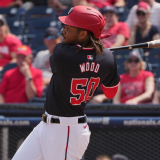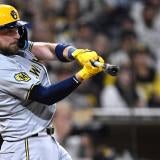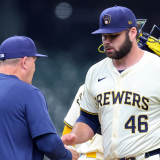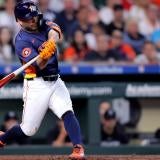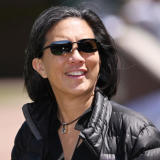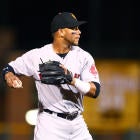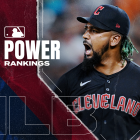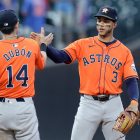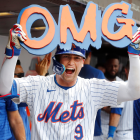Barring something unforeseen, the biggest trade of the offseason has already been made.
A little more than two weeks ago the White Sox sent staff ace Chris Sale to the Red Sox for a package of four prospects, including infielder Yoan Moncada. It's hard to think we'll see a more significant trade this winter.
Moncada is widely regarded as one of the best prospects in baseball, if not the best. Here's where he ranks on the latest top-100 prospect lists:
- Baseball America: First
- MLB.com: First
- Baseball Prospectus: Second
- ESPN: Fifth
The White Sox were going to need an elite prospect to trade Sale -- an elite prospect, and more -- and Moncada certainly qualifies. Few teams could match (or top) Boston's offer once they put Moncada on the table. He's the kind of prospect you trade only for an ace.

Needless to say, prospects like Moncada are not traded all that often, and for good reason. They're potential franchise building blocks and teams are loath to give them up. It takes a perfect storm for them to be traded. The team has to be in win-now mode, and another team has to be willing to trade one of the best players in the game, like Sale.
So, with that in mind, let's examine the prospects similar to Moncada who have been traded, and how their careers turn out. For the purposes of this post, I'm going to define a "prospect similar to Moncada" as a prospect who was traded within a year of placing in the top five of Baseball America's annual top-100 list. Let's dive in.
2013: Wil Myers
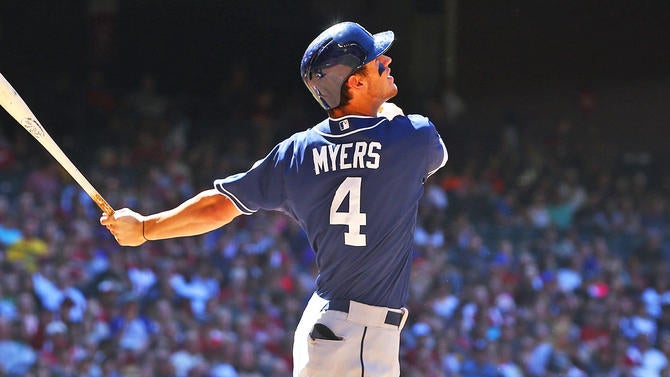
Boy oh boy, were there a lot of Royals fans upset the team traded Myers away in December 2012. A few weeks later, Baseball America ranked Myers as the fourth-best prospect in baseball. Kansas City's end of the deal worked out well -- James Shields was great in his two years with the Royals. Wade Davis turned into one of the best relievers in history, and he threw the final pitch of the 2015 World Series clincher.
Myers, meanwhile, came up midway through the 2013 season and hit .293/.354/.478 (131 OPS+) with 13 home runs in 88 games for the Rays. That was enough to earn him AL Rookie of the Year honors. The next season was riddled with injuries (88 games) and poor performance (77 OPS+). Tampa Bay traded Myers to the Padres following the 2014 season, and after more injuries in 2015, he rebounded to hit .259/.336/.461 (113 OPS+) with 28 home runs in 157 games in 2016.
Since the trade, Myers has hit .257/.331/.429 (109 OPS+) with 5.3 WAR in 392 big league games. He's also had to move down the defensive spectrum from right field to first base. Myers is only 26 and has plenty of career remaining. As it stands right now, he's been a good player, not a great one, and the Royals likely have zero regrets about trading him.
2012: Jesus Montero

Well, technically Montero was No. 6 on Baseball America's top-100 list, but one of the players head of him was Yu Darvish, who spent seven seasons pitching professionally for the Nippon Ham Fighters in Japan. Darvish did qualify as a rookie, but given all his pro experience, it was tough to consider him a prospect, so I'm making an executive decision. Montero's eligible for our list.
Anyway, the Yankees traded Montero to the Mariners in a four-player deal that sent Michael Pineda to New York. Pineda blew out his shoulder soon after the trade and missed the entire 2012 and 2013 seasons. He's given the Yankees a 4.10 ERA (101 ERA+) in 72 starts and 412 2/3 innings across five seasons. Pineda is still with the Yankees and will become a free agent following the 2017 season.
Montero, meanwhile, hit .260/.298/.386 (94 OPS+) with 15 home runs in 135 games in 2012, which isn't terrible by rookie catcher standards. The problem? Montero was a terrible defensive catcher, and his offense cratered the following season (69 OPS+). The Mariners had to move Montero to first base and later DH, and after bouncing back and forth between MLB and Triple-A from 2013-15, he was lost on waivers to the Blue Jays.
The trade hasn't really worked out for either team, though the Yankees wound up with the better end of the deal. Pineda has at least managed to be league average-ish. Montero hit .247/.285/.383 (88 OPS+) in 796 plate appearances as a bad defensive catcher/DH with Seattle, which works out to negative-0.8 WAR. His hit tool wasn't as good as advertised and his work ethic led to conditioning problems.
2007: Cameron Maybin
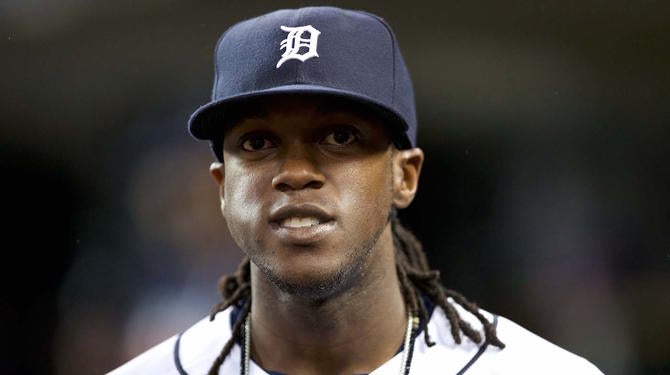
Like Montero, Maybin was actually No. 6 on Baseball America's top-100 list. One of the players ahead of him was Daisuke Matsuzaka, who spent nine years with the Seibu Lions in Japan. Again, I'm calling an audible and making Maybin eligible for our little study.
Ten months after being ranked as the sixth-best prospect in the game, Maybin was traded from the Tigers to the Marlins in the Miguel Cabrera blockbuster. Maybin, Andrew Miller, and four others went to Florida in exchange for Cabrera and Dontrelle Willis. Detroit has no complaints about their end of the deal. They'd do it again and again and again.
The trade didn't work out so well for the Marlins. Maybin appeared in only eight games in 2008 and 144 games total from 2008-10, during which he hit .257/.323/.391 (88 OPS+) with 1.9 WAR. Florida soured on him and Maybin has since bounced from the Marlins to the Padres to the Braves to the Tigers to the Angels. He's piled up 10.9 WAR since the trade.
Maybin will turn 30 soon after Opening Day, and while he hasn't lived up to the two-way promise he showed as a prospect, he has developed into a productive big-leaguer who still has a few more years to play. Ultimately, the Tigers don't miss Maybin, and not just because Cabrera was so great. He's developed into a nice complementary player, not a star.
2002: Carlos Pena
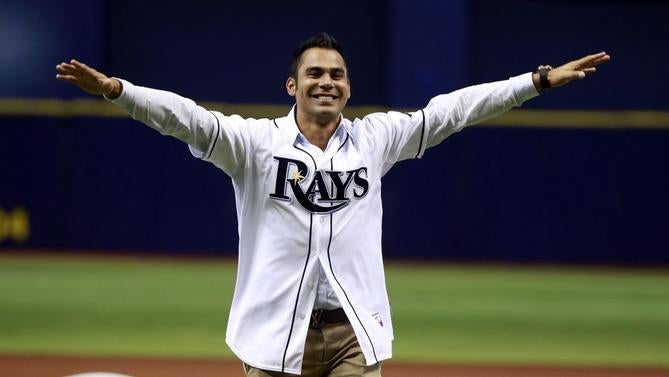
Former Rays slugger Carlos Pena was traded not once, but twice as a top-five overall prospect. The two trades were made within seven months of each other too. Here they are:
- January 14, 2002: Traded to Athletics by Rangers with Mike Venafro for Jason Hart, Gerald Laird, Ryan Ludwick, and Mario Ramos.
- July 5, 2002: Traded to Tigers by Athletics as part of a three-team trade with the Yankees. Detroit received Pena, Jeremy Bonderman, and Franklyn German. Oakland received Ted Lilly, John-Ford Griffin, and Jason Arnold. The Yankees received Jeff Weaver.
Pena spent parts of four seasons with the Tigers, hitting .244/.331/.461 (112 OPS+) with 75 home runs and 4.6 WAR in 427 games. It wasn't until 2007 that Pena hit his stride with Tampa Bay, at age 29. He authored a .282/.411/.627 (172 OPS+) batting line with 46 home runs in 148 games that season, and from 2007-10, Pena hit .238/.368/.516 (135 OPS+) with 144 home runs in 566 games. Only five players hit more homers those years.
After bouncing around the final few seasons of his career, Pena retired in 2014 as a career .232/.346/.462 (117 OPS+) hitter with 286 home runs and 25.1 WAR in 1,493 games. Did the Rangers, the team that originally drafted him, miss Pena? Not really. They had Mark Teixeira at first base in the mid-2000s. There is an opportunity cost, however. The Rangers could have traded Pena for something more worthwhile. Alas.
Pena was a classic late-bloomer, someone who may have never found success if he hadn't changed organizations multiple times and worked with so many different coaches. He had several bona fide star-caliber seasons and finished his career as a solid player who was excellent in spurts and frustrating in others.
1999: Brad Penny
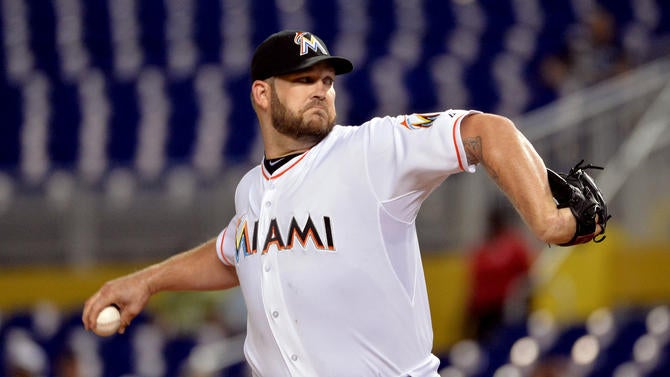
The 1990s were a weird time. Prospects didn't get nearly as much as attention as they do now. Not only from fans, but even from teams themselves. Baseball America rated Penny as the fifth-best prospect in baseball prior to the 1999 season, and that July, the Diamondbacks traded him to the Marlins as part of a package for Matt Mantei.
Mantei, who himself was a highly regarded prospect once upon a time, was a reliever with a career 3.60 ERA (116 ERA+) at the time of the trade, and he missed most of the 1997 season with an injury.
Arizona traded a top-five prospect for a good, but not great, middle reliever. Imagine that? Bullpen help is not cheap these days by any means, but a Penny-type prospect should net you much more than a Mantei-type reliever.
Anyway, Penny spent parts of five seasons with the Marlins and was part of their 2003 World Series rotation. He had a 4.12 ERA (101 ERA+) in 807 2/3 innings with Florida before being traded to the Dodgers at the 2004 trade deadline. Penny had a pair of All-Star seasons in Los Angeles, then finished his career bouncing from team to team. He retired with a 121-101 record and a 4.29 ERA (99 ERA+) with 18.9 WAR in 1,925 career innings. Almost perfectly league average.
Mantei was hampered by injuries with the D-Backs, including Tommy John surgery, and he threw only 173 2/3 innings for them in parts of six seasons. Penny was not a perennial Cy Young candidate by any means, but he was a rock solid workhorse starter for a long time. I know most folks think top-five prospects should develop into aces, but Penny had himself a very nice career. Good outcome.
1998: Paul Konerko
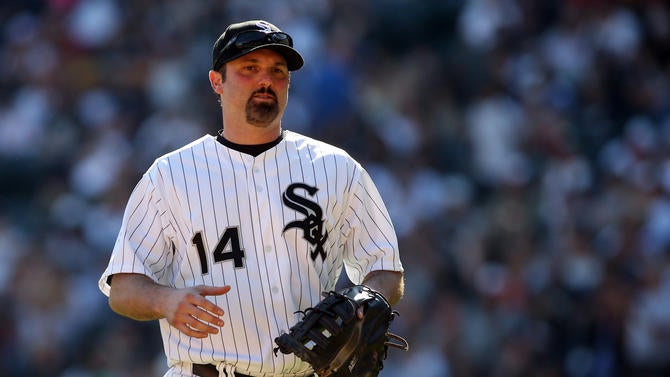
Like Pena, Konerko was traded twice after being named a top-five prospect by Baseball America. He started his career with the Dodgers before taking a circuitous route to the White Sox:
- July 4, 1998: Traded by Dodgers to Reds with Dennys Reyes for Jeff Shaw.
- November 11, 1998: Traded by Reds to White Sox for Mike Cameron.
Shaw was very good for those of you too young to remember the late-1990s. He saved an NL-leading 42 games with the Reds in 1997 and was an All-Star in 1998. Shaw spent the remainder of his career with the Dodgers, saving 129 games with a 3.37 ERA (124 ERA+) from 1998-2001. He was the closer before Eric Gagne.
The Reds flipped Konerko to the ChiSox for Cameron after that 1998 season, and a few years later they included Cameron as part of the trade package for Ken Griffey Jr. Cincinnati didn't get the best years of Junior's career, far from it, but I'm guessing they wouldn't take a do-over on that trade. Griffey sold lots and lots of tickets and merchandise. No doubt about it.
Konerko, meanwhile, became one of the top power hitters in the league in his very first season with the White Sox, hitting .294/.352/.511 (116 OPS+) with 24 home runs as a 23-year-old in 1999. He spent the remainder of his 18-year career in Chicago, going to six All-Star Games and helping the club win the 2005 World Series. Konerko retired as a career .279/.354/.486 (118 OPS+) hitter with 439 homers and 27.6 WAR.
Do the Dodgers regret trading Konerko for Shaw? That's an interesting question. On one hand, the team didn't go to the postseason once while Shaw was their closer. On the other, they had a really good first baseman (Eric Karros) and used a blocked prospect to acquire a high-end closer. It's not Shaw's fault Los Angeles didn't make the postseason from 1998-2001, and Konerko's not someone who would have put them over the top.
Not counting Moncada -- or Lucas Giolito for that matter, who is also a top-five prospect who was traded earlier this month -- only six of Baseball America's top five prospects in an individual season have been traded within the last two decades. One was great (Konerko), three were serviceable everyday players (Maybin, Penny, Pena), one was a total bust (Montero), and one is still to be determined (Myers).
There's no real pattern here aside from the fact five of the six traded prospects were position players. Could that be an indication that when a team is ready to make a blockbuster trade and acquire a top prospect, they prefer a position player because they're a safer bet to stay healthy? Possibly! It could also be nothing more than a coincidence.
Generally speaking, top-five global prospects are good bets to be productive big-leaguers, and we didn't need to look back at these six players for proof. Unless Moncada has work ethic issues or has been misevaluated like Montero, chances are he'll be a good player for the White Sox. Maybe even the next Konerko in terms of output and popularity.



